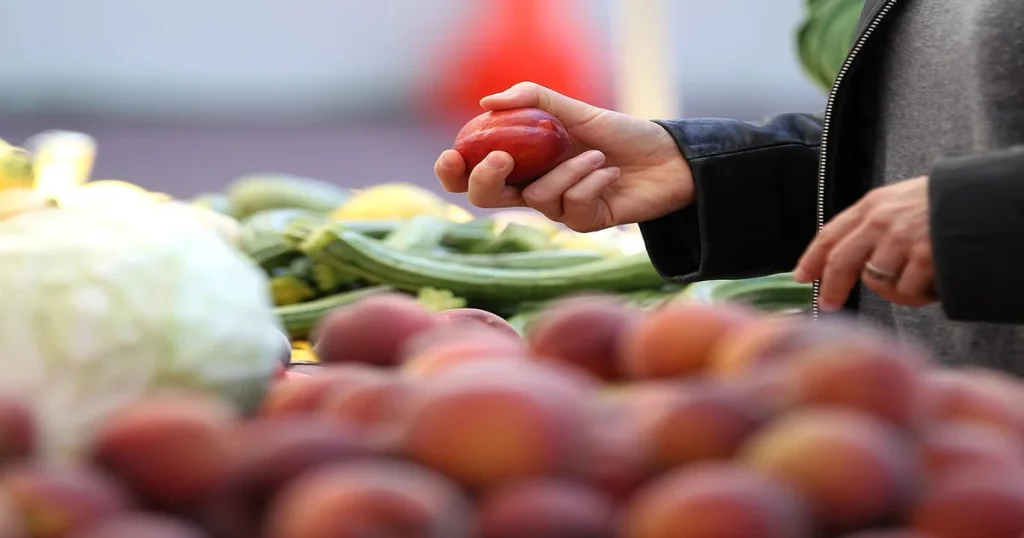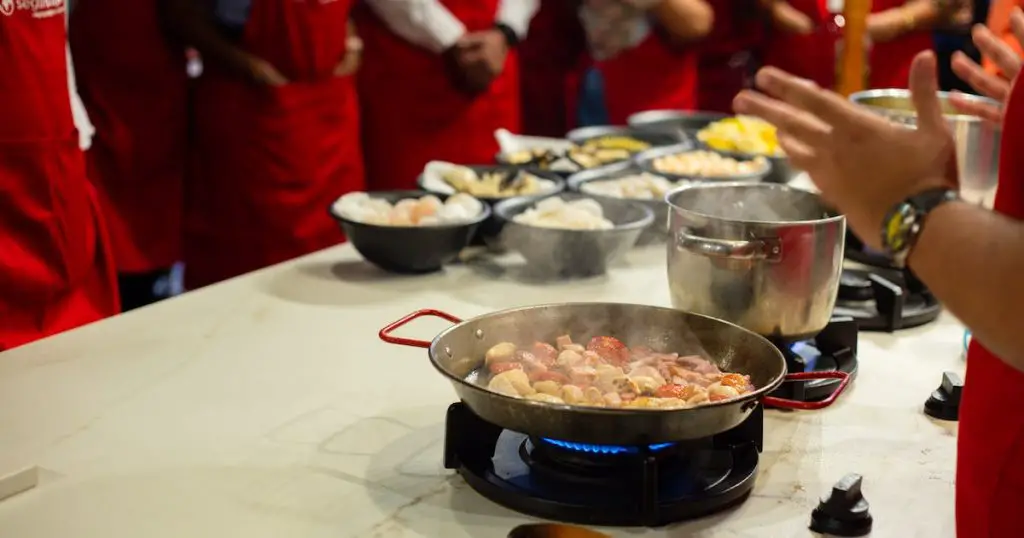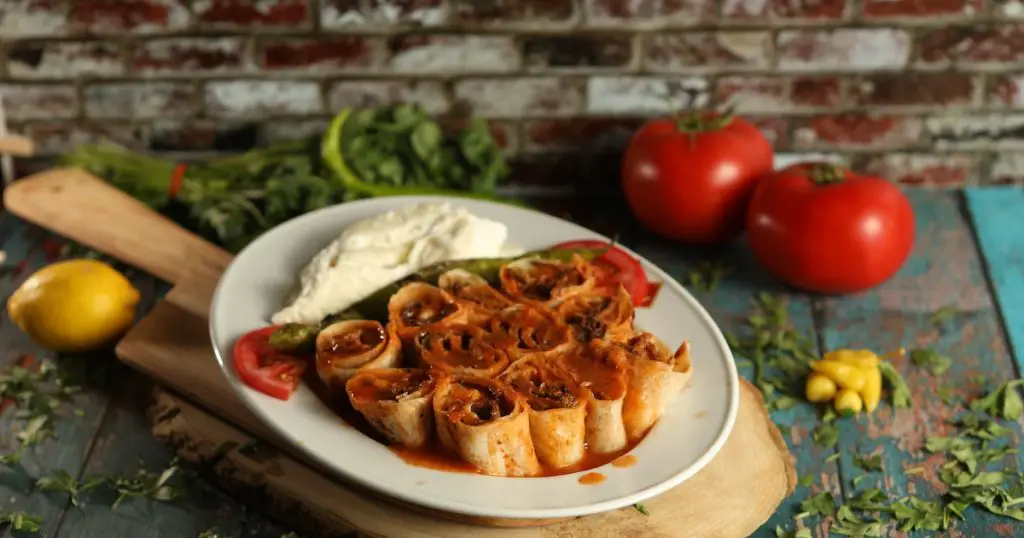Nestled in the heart of Arizona, Prescott is more than just a picturesque town surrounded by natural beauty; it’s a culinary haven influenced by a unique climate and rich cultural history. The gastronomic delights found here aren’t just the results of skilled chefs and generations of family recipes—they are also shaped by Prescott’s unique four-season climate.

In this article, we’ll take a journey to explore how Prescott’s climate significantly affects its local cuisine, from farm to table.
The Geographical Location of Prescott
Prescott lies in central Arizona, offering a blend of mountainous terrain and valleys that have their own say in the local climate. Its geographical features play a significant role in why this area is so unique, both in terms of weather and food.
What’s fascinating about Prescott is its elevation. Sitting at over 5,000 feet, the town experiences cooler temperatures than most of Arizona. This geographical element lends itself to a more varied crop selection and influences livestock farming, shaping the area’s distinctive cuisine.
Prescott’s Climate Overview
Prescott enjoys a four-season climate but within a semi-arid setting. Unlike much of Arizona, you’ll experience the spring bloom, the summer heat, the autumnal change, and even the cozy winters. This variation in climate through the year contributes significantly to the richness of the food produced and consumed here.
The contrast of hot summers and cold winters, interspersed with mild spring and autumn seasons, facilitates a wide array of agricultural possibilities. Whether it’s the seasonal fruits or the hardy winter vegetables, the climate ensures that the local cuisine remains vibrant and diverse throughout the year.
Historical Background
Before delving into the specifics of climate impact, understanding the area’s history is crucial. The Native American communities that originally inhabited this region left an indelible impact on its food culture. These ancient peoples knew how to make the most of the land, and their influence can still be felt in some of the area’s traditional dishes.
The culinary scene has also been affected by settlers and immigrants who brought their food traditions with them. These influences, combined with what the land naturally offers, have resulted in a unique and varied culinary landscape. This synthesis of historical elements offers a rich backdrop against which modern Prescott cuisine has evolved.
Local Ingredients Fostered by Prescott’s Climate
The local produce is an immediate indicator of the impact of Prescott’s climate on its cuisine. From leafy greens to vibrant fruits, the variety is impressive. Farms around the area are able to grow a diverse range of crops, thanks to the distinct seasons.
Livestock farming is another sector that has thrived here. With a landscape that supports grazing and a climate that isn’t too harsh for the animals, locally sourced meat is a significant feature on any menu in Prescott.
Unique Herbs and Spices
When it comes to herbs and spices, Prescott’s climate again plays a role. Herbs like rosemary and thyme thrive in the mild but dry conditions. These herbs not only garnish dishes but also serve medicinal purposes, a throwback to Native American traditions.
Similarly, spices like red and green chilies are popular, especially in the summer and autumn months. The heat and spice add flavor to dishes, but they also help in perspiration, a natural cooling mechanism for the body. It’s incredible to think that even the seasonings in Prescott’s food are climate-conscious!
How Seasonal Changes Affect Cuisine
In Prescott, each season brings its own set of favored ingredients and dishes. This is not just a nod to the availability of seasonal produce but also to the human body’s natural cravings as the weather changes.

Spring brings a burst of greenery, and with it, the use of fresh herbs, leafy vegetables, and spring onions in local dishes. As the climate begins to warm, the lighter meals are not just delicious but also perfect for the body’s needs during this transitional season.
Spring Delights
Spring in Prescott is a time of celebration, especially when it comes to food. Festivals like the annual Prescott Farmers Market highlight fresh local produce and often feature menus centered around spring fruits and vegetables.
Local restaurants also update their menus to include spring delicacies, such as salads enriched with fresh berries and greens, and beverages flavored with spring herbs.
Summer Harvest
Summer in Prescott is hot but not unbearable, thanks to its elevation. People tend to lean towards foods that are hydrating and cooling. You’ll find a plethora of dishes featuring cucumbers, watermelons, and other water-rich foods.
Cookouts and barbecues are frequent summer activities. Grilled vegetables and meats are popular, often seasoned with a blend of local spices and herbs. A trip to the local farmer’s markets will show you how much the summer season influences local cuisine.
Autumn Flavors
As the leaves start to change, so do the flavors in Prescott’s local dishes. Autumn introduces a richer, heartier menu. Pumpkin and squash dishes are a local favorite, with the season bringing a burst of color to both the trees and the dinner table.
In addition, autumn is a time for harvest festivals like the Prescott Oktoberfest, where local produce takes center stage. Foods are often spiced with cinnamon and nutmeg, providing a warming effect as the temperatures start to drop.
Winter Comforts
Winter in Prescott isn’t just about the holiday festivities; it’s also about food that warms the soul. Stews and casseroles featuring root vegetables are common, often slow-cooked to perfection.
In terms of beverages, you’re likely to find people sipping on hot chocolate or mulled wine. The latter is especially popular given Prescott’s burgeoning wine scene, influenced, of course, by the local climate.
Influence on Local Restaurants
Local restaurants in Prescott are keenly aware of the impact of climate on the ingredients they use. Many restaurants offer farm-to-table experiences, ensuring that the ingredients are not just fresh but also seasonal.
Menus often change to reflect the seasonal offerings. This not only provides variety but also ensures that the ingredients are at their peak, both in terms of flavor and nutritional value.
The Role of Prescott’s Climate on Seafood Availability
While Prescott is not near the ocean, the local climate does influence the availability of freshwater fish. Trout, for example, is a local delicacy, found in many restaurants. Imported seafood is also available, but it’s the freshwater varieties that often steal the show.

Given the arid climate, the local preference for freshwater fish over imported seafood also comes down to sustainability. Transporting seafood from afar has a higher carbon footprint, making locally sourced fish a more sustainable option.
Prescott’s Beverages Shaped by Climate
The climate in Prescott is friendly for vineyards, and local wines are becoming more prominent. Whether it’s the crisp white wines favored in summer or the rich reds preferred in winter, the local wine culture is another example of climate’s role in local cuisine.
Apart from wine, Prescott’s craft beer scene is also thriving. Seasonal changes mean that breweries often release special edition beers to coincide with the weather. For instance, you might find a light, citrus-infused ale in the summer and a hearty stout in the winter.
Non-alcoholic beverages also show the influence of climate. Herbal teas using locally grown herbs are popular, especially during the colder months. Local cafes and eateries often offer a range of these teas, made from ingredients that grow abundantly due to the area’s specific climatic conditions.
Cultural Celebrations and Festivals
Festivals in Prescott are a gastronomic treat, and each celebration brings its own unique dishes to the table. From the traditional American fare during the Fourth of July to specialized dishes during cultural festivals, the variety is staggering.
These festivals are not just about the food, but also about the community coming together to celebrate their local produce and culinary skills. The climate plays a significant role here too, as festivals are often scheduled around harvest times or seasons that offer the best of what the local land has to offer.
Fusion Cuisine in Prescott
In addition to traditional and seasonal dishes, Prescott is also home to some innovative fusion cuisine. Here, you’ll find classic American dishes with a Mexican twist or Asian flavors infused with locally grown herbs.
What makes these fusion dishes so unique is the incorporation of local ingredients. The climate ensures a steady supply of diverse produce, enabling chefs to get creative while staying true to Prescott’s culinary roots.
Dietary Trends and Climate
In recent years, there has been a noticeable shift towards more sustainable dietary choices in Prescott. Given the arid conditions and water scarcity, the concept of “climate-friendly” food has gained traction.
Restaurants and food producers are increasingly focusing on sustainable practices, from reducing water usage to sourcing locally to minimize carbon footprint. Vegan and vegetarian options are becoming more prevalent, driven both by health trends and a growing awareness of food’s environmental impact.
Climate Challenges and Cuisine
While Prescott’s climate offers numerous benefits for local cuisine, it also poses some challenges. For instance, drought conditions can impact both livestock and crop yields, leading to increased prices and limited availability.

However, these challenges have led to some innovative solutions. Water-saving agriculture techniques, including drip irrigation, are increasingly common. Restaurants are also finding creative ways to preserve seasonal foods, like canning and fermenting, so they can be enjoyed year-round.
Frequently Asked Questions: Prescott’s climate and its effect on local cuisine
What are some must-try local foods in Prescott?
If you’re visiting Prescott, you won’t want to miss out on the seasonal delights. Freshwater trout is a local favorite, and you should definitely try dishes featuring locally grown fruits and vegetables. In the autumn, dishes that include pumpkin and squash are popular and don’t forget to sample local wines and craft beers, which vary by season.
How do restaurants adapt to seasonal changes?
Restaurants in Prescott are highly adaptive to the changing seasons, often altering their menus to feature seasonal produce and local meat. Farm-to-table is a common concept here, ensuring that the ingredients are fresh and at their peak flavor. Some restaurants even collaborate with local farms to source their ingredients.
Are there any climate-friendly food initiatives in Prescott?
Yes, Prescott has seen a growing trend in sustainable eating. Many local eateries focus on eco-friendly practices, such as minimizing water usage, reducing waste, and sourcing locally to cut down on transportation emissions. You’ll also find an increasing number of vegan and vegetarian options as part of this climate-conscious initiative.
How does Prescott’s cuisine differ from other Arizonian cities?
Prescott’s unique four-season climate allows for a broader range of local produce compared to other parts of Arizona, which tend to be more arid and hot. This diversity in climate results in a more varied culinary palette, incorporating a mix of Native American, traditional American, and even fusion cuisines. Freshwater fish, for example, is more common in Prescott than in other Arizonian cities.
What is the influence of Native American culture on Prescott’s cuisine?
The Native American influence on Prescott’s food culture is significant and historic. Many of the herbs and spices used in local dishes have roots in Native American traditions, and methods like smoking and fermenting foods were originally Native American practices. While modern-day cuisine has evolved, the foundational elements remain influenced by the region’s Native American heritage.
Summary
In the heart of Arizona, Prescott stands as a testament to how a unique climate can shape a local culinary scene. From seasonal foods and beverages to traditional and fusion dishes, the area’s climate plays a central role in defining what lands on the table.
As we’ve seen, Prescott’s climate has a hand in almost every aspect of the local food scene, making it an integral part of the city’s identity. Whether you’re a resident or just visiting, the climate-enhanced culinary delights of Prescott are sure to leave a lasting impression.



Leave a Comment
You must be logged in to post a comment.